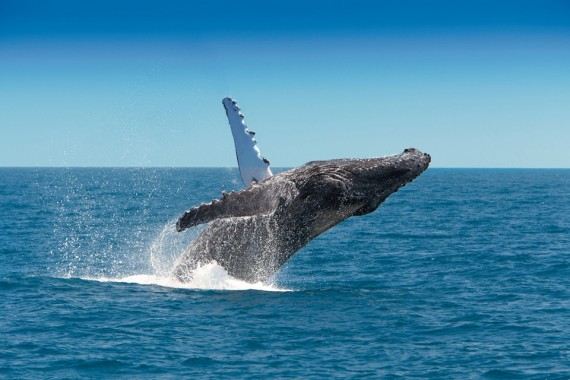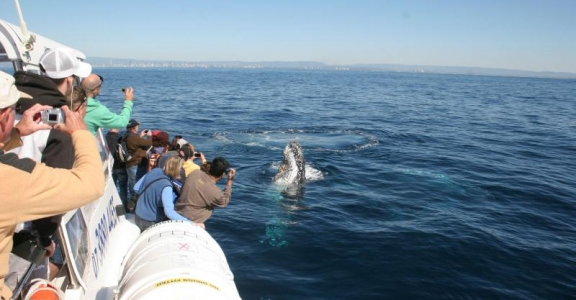Whales sighted off Sunshine Coast

It’s been described as the experience of a lifetime. How else would you sum up coming face to face with something that grows to 16 metres in length and weighs in at 50 tons?
Right now we are right in whale watching season and the Sunshine Coast is one of the best coastal regions to take in this natural phenomenon. Let’s face why wouldn’t the whales share our love of our coastline. In fact whale watching has become one of our tourist industries most popular activities, with a good number of excellent tour operators you will be spoilt for choice. Usually you will find a morning and afternoon departure schedule, which makes it quite convenient to arrange a trip around other activities. The average cost for an adult trip is around $110 to $170 depending upon the level of luxury vessels you choose. Some options include a full day out on the water complete with food and beverages. Operators also offer packages that make it a little more affordable for the families to share the experience.
Be sure to understand exactly what you are getting for your ticket price as the level of facilities will vary between operators, for instance some provide underwater viewing portals which adds yet another dimension to this amazing experience. A few even go as far as having hydrophones so that you can listen to the whale’s songs as they pass you by. You will not be disappointed.
 This seasonal migration involves the male of the species begins in June, as they make their way north to warmer waters. They will of course head back our way in October so we are fortunate to have two opportunities to watch their antics as they breach, lift their ginormous tails, slap the water surface and spy hop. Interestingly whales do not eat during their annual migration.
This seasonal migration involves the male of the species begins in June, as they make their way north to warmer waters. They will of course head back our way in October so we are fortunate to have two opportunities to watch their antics as they breach, lift their ginormous tails, slap the water surface and spy hop. Interestingly whales do not eat during their annual migration.
A few facts. Whales are the biggest creatures in the waters but are also quite unique creatures. Even though truly immense in size, they appear majestic in the water, the way they live including how they feed makes them truly astonishing animals. They live in some of the deepest seas in the world and take full advantage of these habitats, but can be found in all the oceans of the earth.
Whales belong to the cetacean order, which refer to mammals adapting to an water-aquatic life. As we know they grow to extremely large sizes and are a close relative of the dolphins and porpoises. And like dolphins they are able to communicate through a variety of sounds with their offspring, which makes them really unique creatures of the undersea world.

Here’s some whale facts which makes understanding the beautiful a little easier.
- Whales breathe air: They are able to inhale oxygen through their blowhole, so air is essential for their diverse physiological and metabolic purposes.
- Not so surprisingly whales do not sleep for long as they need to rise to the surface to breath air.
- A whale’s brain sleeps one half at a time enabling the whale to support basic functions allowing them to rest whilst maintaining body functions.
- Identifying the sex of a whale is hard the male genitals are hidden from view when not in use making male and female whales appear very similar.
- Whales are warm blooded mammals and classified as cetaceans meaning that they lead a completely aquatic life.
- Whales can swim fast, reaching speeds of approximately 50 kph.
- Whales have hair, but because it’s so thin and light it is not easily visible unless you are really, really up close with one.
And finally something to consider, humans are the whale’s main predators due to their economic benefits.
So if you’re looking for an experience like no other, why not set sail for a spot of whale watching. And take a camera you will want to share your experiences of your high seas adventure.
Check out this great online resource.

No comments yet.